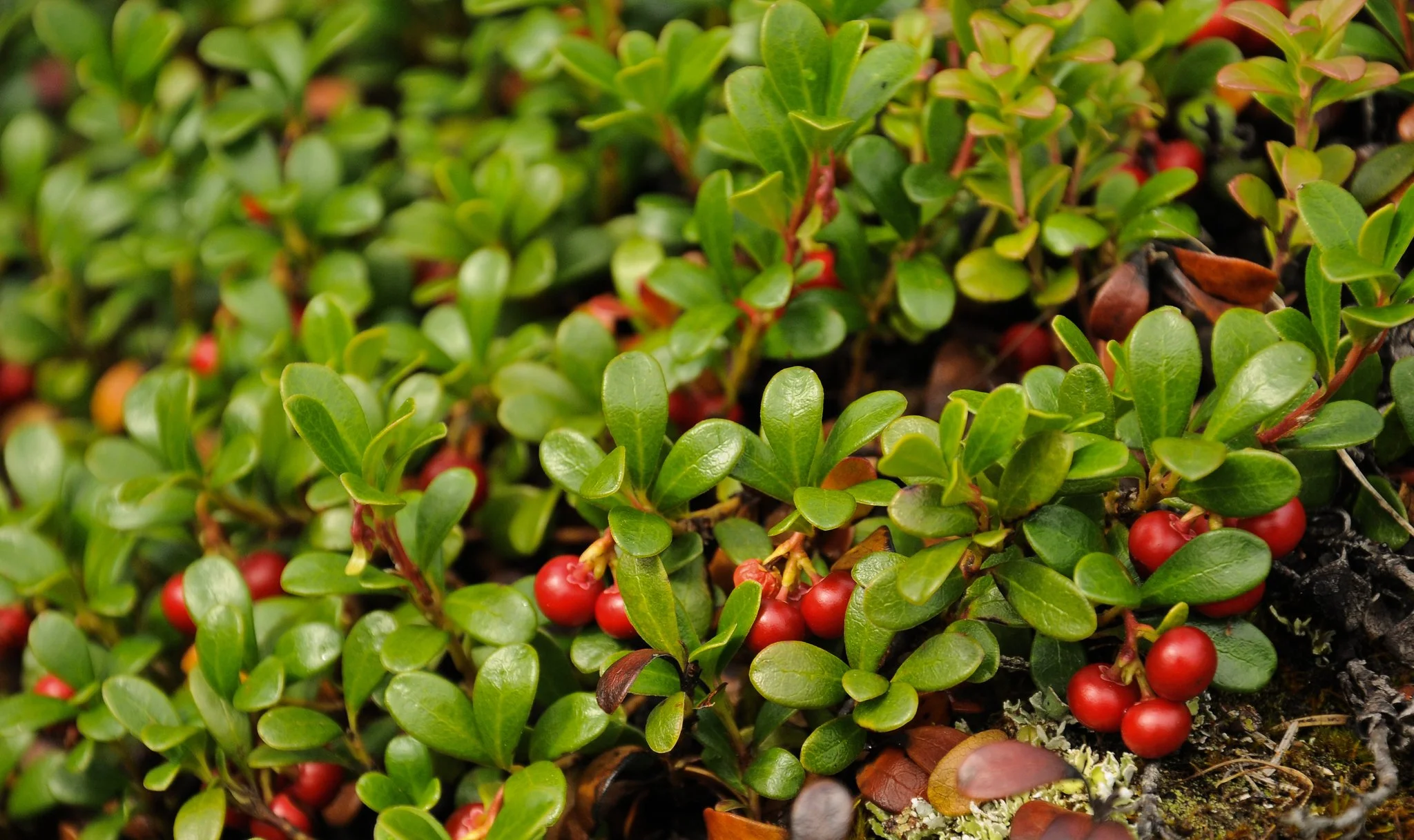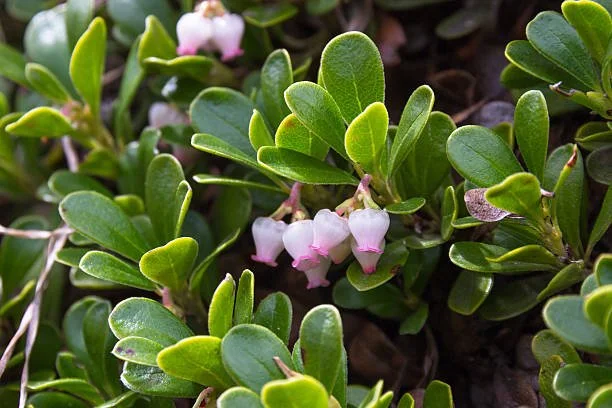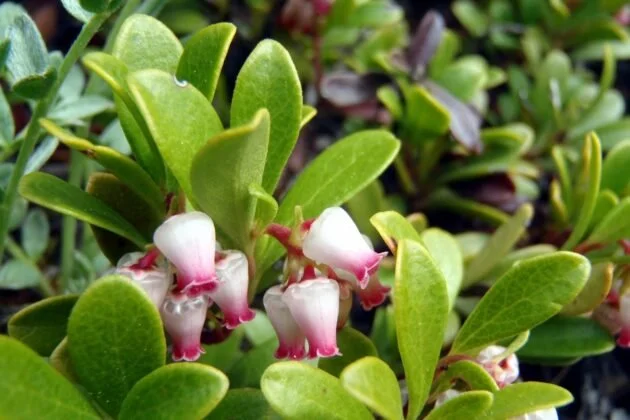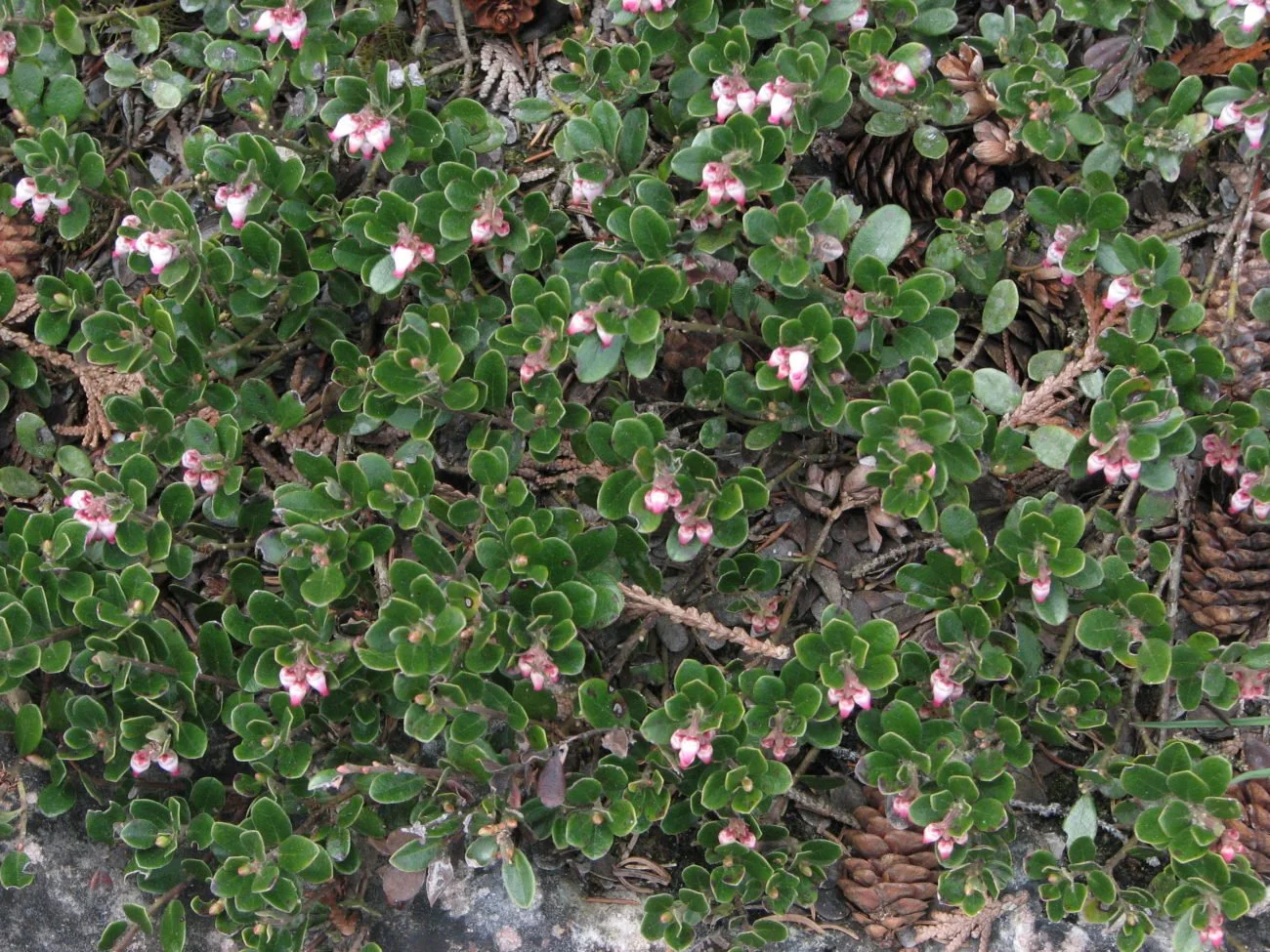
Arctostaphylos uva ursi
Common Name: Uva ursi or Bearberry
Family: Ericaceae (Heath family)
Parts used: Leaf
Constituents: Phenolic glycosides(arbutin, methylarbutin, aglycones, hydroquinone, methylhydroquinone) and hydrolyzable tannins
Taste/smell: Astringent, slightly sweet
Tendencies: Cooling, drying
Actions
Urinary tract antiseptic
Diuretic
Uses
Urinary Tract Antiseptic:
Bacterial lower urinary tract infection
Diuretic:
Increases renal circulation
Stimulates tubular function
Mental Picture and Specifics
Uva ursi is indicated for atonic, chronic conditions and infectious conditions of the urinary tract.
Contraindications
Pregnancy due to its oxytocic properties
Use for > 10 consecutive days
Ingestion in sensitive individuals may cause nausea and vomiting
Adverse Effects
Nausea from tannins
Toxicity
Nausea
Vomiting
Tinnitus
Difficult breathing
Convulsions
Loss of consciousness
Interactions
Arbutin inhibits the degradation of insulin and may be problematic for those with hypoglycemia
References:
Brinker, Francis J. Herbal Contraindications and Drug Interactions plus: Herbal Adjuncts with Medicines. Eclectic Medical Publications, 2010.
Kaufmann, Taylor. NPLEX II Study Guide. Wild Brilliance Press, 2019.
Lun, Vincent, et al. Core Knowledge for NPLEX 2. 1st ed., Marano Publishing Incorporated, 2014.
Marciano, Marisa, and Nikita A. Vizniak. Evidence Informed Botanical Medicine. Professional Health Systems Inc., 2015.
Sherman, John. The Complete Botanical Prescriber. Four Seasons Pub.
Skenderi, Gazmend. Herbal Vade Mecum: 800 Herbs, Spices, Essential Oils, Lipids, Etc., Constituents, Properties, Uses, and Caution. Herbacy Press, 2004.
Tilgner, Sharol. Herbal Medicine: From the Heart of the Earth. Wise Acres, 2020.









